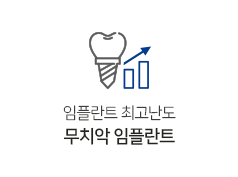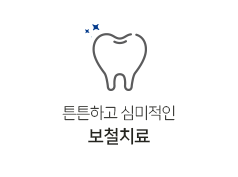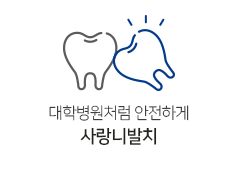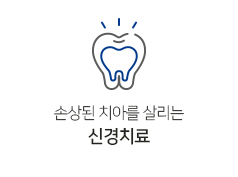Exfoliation is a crucial step in any skincare routine that involves re…
페이지 정보
작성자 Perry 댓글 0건 조회 18회 작성일 24-10-22 08:12본문
3. Exfoliation: Regular exfoliation is important for removing dead skin cells and promoting cell turnover. Choose a gentle exfoliator that won't irritate the skin and use it 1-2 times per week to maintain smooth and clear skin.
2. Practice good skincare habits: Wash your face twice daily with a gentle cleanser, and avoid scrubbing too harshly, as this can irritate the skin. Be sure to remove makeup before bed to prevent clogged pores.
When selecting a bronzer, it's important to choose a shade that complements your skin tone. Here are some tips for finding the right shade:
- Fair skin: Opt for a light, matte bronzer with cool undertones to avoid looking too orange or muddy.
- Medium skin: Medium to warm-toned bronzers work best for medium skin tones. Look for shades that are not too dark or too light for a Natural hair bridal styles finish.
- Dark skin: Deep, warm-toned bronzers with a hint of shimmer can enhance dark skin tones and add a beautiful glow.
5. Sun Protection: Always use a broad-spectrum sunscreen with an SPF of 30 or higher to protect your skin from sun damage, premature aging, and skin cancer. Look for oil-free or non-comedogenic formulas that won't clog pores.
There are several factors that can contribute to the development of acne-prone skin. Hormonal changes, particularly during puberty, can increase oil production in the skin, leading to clogged pores. Genetics can also play a role, as acne tends to run in families. Other factors such as stress, diet, and certain medications can also contribute to the development of acne.
1. Oily T-zone: The forehead, nose, and chin may appear shiny and be prone to blackheads and breakouts.
2. Dry cheeks: The cheeks may feel rough, tight, and flaky, especially after washing the face.
3. Large pores: Combination skin often has larger pores in the T-zone area due to increased oil production.
4. Skin sensitivity: Combination skin can be sensitive to certain products or environmental factors, leading to redness or irritation.
This can make it quite challenging to find the right skincare products and routine that will address both oily and dry skin needs. Understanding the causes, symptoms, and proper care for combination skin can help individuals effectively manage and maintain healthy skin.
2. Practice good skincare habits: Wash your face twice daily with a gentle cleanser, and avoid scrubbing too harshly, as this can irritate the skin. Be sure to remove makeup before bed to prevent clogged pores.
It's important to note that managing acne-prone skin is a gradual process that requires patience and consistency. By following a skincare routine tailored to your skin type and consulting with a dermatologist as needed, you can effectively manage acne and achieve clearer, healthier skin.
7. Consult a dermatologist: If over-the-counter treatments are not effective in managing your acne-prone skin, consider seeing a dermatologist for prescription medications or treatments such as topical retinoids, oral antibiotics, or in-office procedures like chemical peels or laser therapy.
In conclusion, exfoliation is a vital step in any skincare routine that can help improve skin texture, unclog pores, and reveal a smoother, more radiant complexion. By incorporating the right exfoliation method for your skin type and being mindful of how often you exfoliate, you can enjoy the benefits of healthier, more vibrant skin.
Combination skin can be caused by a variety of factors, including genetics, hormones, and environmental influences. One of the main reasons for combination skin is an overproduction of oil in the T-zone (forehead, nose, and chin) while other areas like the cheeks may be drier. Hormonal fluctuations, stress, diet, and skincare products can also contribute to the development of combination skin.
Chemical exfoliation, on the other hand, involves the use of acids like alpha hydroxy acids (AHAs) and beta hydroxy acids (BHAs) to dissolve dead skin cells and unclog pores. AHAs, such as glycolic acid and lactic acid, work on the surface of the skin to exfoliate and brighten, while BHAs, like salicylic acid, penetrate deeper into the pores to clear out impurities. Chemical exfoliants are generally milder than physical scrubs and are suitable for most skin types, including sensitive skin.
3. Layering Techniques:
To enhance the longevity of your highlighter, consider using a layering technique. Start by applying a cream highlighter as a base to give your skin a luminous glow. Then, set it with a powder highlighter of a similar shade to intensify the effect and prolong its wear time.
In conclusion, combination skin requires a tailored approach to skincare that addresses both oily and dry areas effectively. By following a consistent skincare routine with gentle and targeted products, individuals with combination skin can achieve a healthier and more balanced complexion. Remember to pay attention to how your skin responds to different products and adjust your routine as needed to maintain optimal skin health.
2. Practice good skincare habits: Wash your face twice daily with a gentle cleanser, and avoid scrubbing too harshly, as this can irritate the skin. Be sure to remove makeup before bed to prevent clogged pores.
When selecting a bronzer, it's important to choose a shade that complements your skin tone. Here are some tips for finding the right shade:
- Fair skin: Opt for a light, matte bronzer with cool undertones to avoid looking too orange or muddy.
- Medium skin: Medium to warm-toned bronzers work best for medium skin tones. Look for shades that are not too dark or too light for a Natural hair bridal styles finish.
- Dark skin: Deep, warm-toned bronzers with a hint of shimmer can enhance dark skin tones and add a beautiful glow.
5. Sun Protection: Always use a broad-spectrum sunscreen with an SPF of 30 or higher to protect your skin from sun damage, premature aging, and skin cancer. Look for oil-free or non-comedogenic formulas that won't clog pores.
There are several factors that can contribute to the development of acne-prone skin. Hormonal changes, particularly during puberty, can increase oil production in the skin, leading to clogged pores. Genetics can also play a role, as acne tends to run in families. Other factors such as stress, diet, and certain medications can also contribute to the development of acne.
1. Oily T-zone: The forehead, nose, and chin may appear shiny and be prone to blackheads and breakouts.
2. Dry cheeks: The cheeks may feel rough, tight, and flaky, especially after washing the face.
3. Large pores: Combination skin often has larger pores in the T-zone area due to increased oil production.
4. Skin sensitivity: Combination skin can be sensitive to certain products or environmental factors, leading to redness or irritation.
This can make it quite challenging to find the right skincare products and routine that will address both oily and dry skin needs. Understanding the causes, symptoms, and proper care for combination skin can help individuals effectively manage and maintain healthy skin.
2. Practice good skincare habits: Wash your face twice daily with a gentle cleanser, and avoid scrubbing too harshly, as this can irritate the skin. Be sure to remove makeup before bed to prevent clogged pores.
It's important to note that managing acne-prone skin is a gradual process that requires patience and consistency. By following a skincare routine tailored to your skin type and consulting with a dermatologist as needed, you can effectively manage acne and achieve clearer, healthier skin.
7. Consult a dermatologist: If over-the-counter treatments are not effective in managing your acne-prone skin, consider seeing a dermatologist for prescription medications or treatments such as topical retinoids, oral antibiotics, or in-office procedures like chemical peels or laser therapy.
In conclusion, exfoliation is a vital step in any skincare routine that can help improve skin texture, unclog pores, and reveal a smoother, more radiant complexion. By incorporating the right exfoliation method for your skin type and being mindful of how often you exfoliate, you can enjoy the benefits of healthier, more vibrant skin.
Combination skin can be caused by a variety of factors, including genetics, hormones, and environmental influences. One of the main reasons for combination skin is an overproduction of oil in the T-zone (forehead, nose, and chin) while other areas like the cheeks may be drier. Hormonal fluctuations, stress, diet, and skincare products can also contribute to the development of combination skin.
Chemical exfoliation, on the other hand, involves the use of acids like alpha hydroxy acids (AHAs) and beta hydroxy acids (BHAs) to dissolve dead skin cells and unclog pores. AHAs, such as glycolic acid and lactic acid, work on the surface of the skin to exfoliate and brighten, while BHAs, like salicylic acid, penetrate deeper into the pores to clear out impurities. Chemical exfoliants are generally milder than physical scrubs and are suitable for most skin types, including sensitive skin.
3. Layering Techniques:
To enhance the longevity of your highlighter, consider using a layering technique. Start by applying a cream highlighter as a base to give your skin a luminous glow. Then, set it with a powder highlighter of a similar shade to intensify the effect and prolong its wear time.
In conclusion, combination skin requires a tailored approach to skincare that addresses both oily and dry areas effectively. By following a consistent skincare routine with gentle and targeted products, individuals with combination skin can achieve a healthier and more balanced complexion. Remember to pay attention to how your skin responds to different products and adjust your routine as needed to maintain optimal skin health.
댓글목록
등록된 댓글이 없습니다.























































